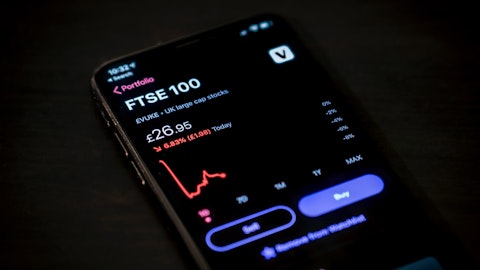Kelly Hibbs: Yes. I think that’s a pretty fair representation of what we think normalized will be. Like us, they would have experienced some run-up and then more recently a little bit of rundown in terms of pricing, but we feel like that’s a reasonable run rate to start from. And as Jeff said, we’re pretty excited about not just can we offer more products to our existing customers through BROSCO, but also at the same time there’s going to be some opportunity where some of their customers that we have not served previously, we can offer them a more full line of products as well. So we’re excited about that, and the team at BROSCO is really good. So we’re excited there.
Ketan Mamtora: Got it. That’s very helpful. I’ll jump back in the queue. Good luck.
Kelly Hibbs: Thank you.
Nate Jorgensen: Thanks Ketan.
Operator: Thank you. [Operator Instructions] Our next question will come from Michael Roxland of Truist Securities. Your line is open.
Michael Roxland: Thank you, Nate, Kelly, Mike and Jeff for taking my questions, and congrats on a good quarter.
Nate Jorgensen: Thank you, Mike. Good morning.
Michael Roxland: Good morning. Just on your last call you guys mentioned maintaining good products margins higher than you had historically. You referenced a number of upgrades and replacements that you have been – that have been ongoing for more than a decade now. So in terms of the margin profile, as you continue to deploy new dryers, pressers, et cetera, what’s the margin you’re ultimately targeting for that business and over what time frame?
Kelly Hibbs: Yes. So yes, that is the question I had from last quarter. And I would tell you we’re targeting mid-double-digit EBITDA margin in that business going forward. And some of the spending you referenced, some of that is frankly maintenance, right, dryers, LUCs, presses, those sorts of things. Those aren’t – those don’t necessarily increase your profile, but they certainly sustain your capabilities to support the customers. And so we’ve really done a nice job of focusing that business over the last number of years, and I think the strategy is playing out as we hoped.
Michael Roxland: Got it. Thank you. Just one quick follow-up. We’re saying mid-double digit. You saw about 20%, 25% type EBITDA margins on a go-forward basis? Or, and if so is that – is that 2024, 2025 or how do you think about the time frame?
Kelly Hibbs: No, I wasn’t speaking in the ’20s, Mike. I was thinking the mid-teens.
Michael Roxland: Mid-teens, okay.
Kelly Hibbs: And we’re above that today as you’ve seen.
Michael Roxland: Got it. Thank you for that. And just one quick question on EWP; expecting EWP penetration in single-family home construction, any share shift back to lumber? Given the weaker lumber prices have longer regained any share given where those prices are trending today?
Mike Brown: Mike, this is Mike. Yes. So I’m not sure I would say there’s been a shift one way or the other to be honest. I think the building approach that EWP in general caters to is not necessarily that sees a lot of shift one way or another to that particular combination of lumber versus engineered wood products. It can have to do with availability as much as anything else. So as you would have seen or we all saw over the, say, the preceding few years when EWP was on allocation. Yes, it was a little bit, I think of slippage of EWP or movement of EWP and lumber. But I think, generally speaking that’s not something that happens to any great magnitude. But when there’s nothing else available, lumber can be used in place of EWP. Our story for EWP is the quality, consistency and availability and speed of construction that it brings relative to other products and obviously the largest one is lumber.
Nate Jorgensen: And Mike, maybe just to add to Mike’s comments, I think when you think about his last point, not just on the speed of construction. The homebuilders are really pushing for cycle time reduction on the job site. And so EWP is very much part of the answer there in terms of taking time out of the construction cycle. And as Mike described, we feel good about that trend and that opportunity continuing as we head into 2024 and EWP [ph] will continue to play a really important role in that.


